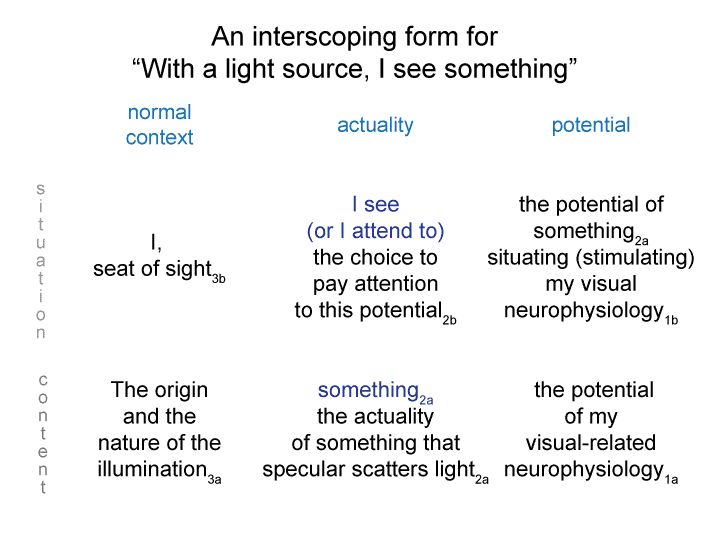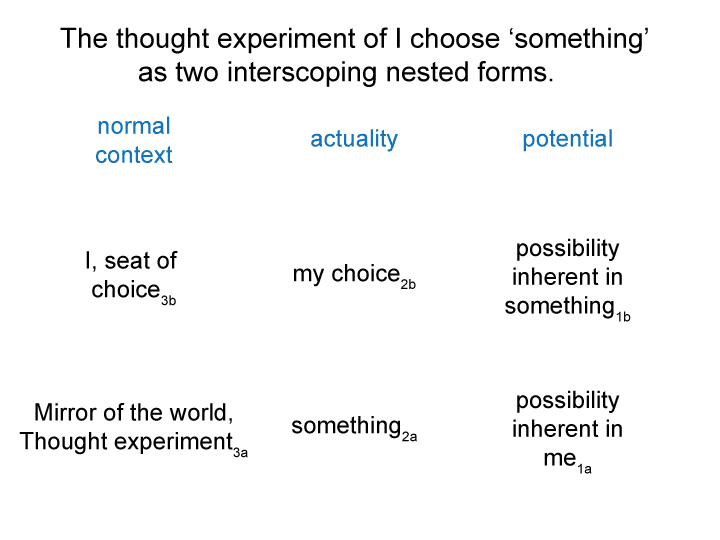Man and Sin by Piet Schoonenberg (1964) 2.3 ZG
Summary of text [comment] page 88
[The interscope works when ‘my attention’ seamlessly selects a particular item that specular scatters light. In other words, my situational attention3b directs my neurophysiological potential1a towards a content level something2a. This is the only way for a thing to emerge from and situate my neurological potentials.
I, seat of sight3b, virtually emerges from and situates the origin and the nature of the illumination3a. Under typical conditions, I do not even notice the ‘I see’ nested formb. I unhesitatingly attend to something2a.]
Man and Sin by Piet Schoonenberg (1964) 2.3 ZF
[I, seat of sight3, brings my attention2 into relation with the possibilities inherent in ‘light specular scattering from the surface of something stimulating my neurophysiological potential’1.
A light source3 brings some thing that actually specular scatters photons2 into relation to my visual neurophysiological potential1.
These two nested forms may interscope or intersect.]
Man and Sin by Piet Schoonenberg (1964) 2.3 ZE
Summary of text [comment] page 88
[Let me reconsider a natural analogy:
With a light source, ‘I see something’.
As before, there are two actualities: ‘I see’ and ‘the something that I see’.]
Man and Sin by Piet Schoonenberg (1964) 2.3 ZB
Summary of text [comment] page 88
[Given these two nested forms, there are several ways to bring them into relation, including intersection or interscope. Here are two ways to do that.]
Man and Sin by Piet Schoonenberg (1964) 2.3 ZA
[One may dispute these nested formulations. Perhaps, one can claim that the thought experiment should be left out of the picture. However, to me, that runs against a key observation: Choice and the something that can be chosen are two independent actualities.
So, the thought experiment where ‘I choose something’ became a model.
This is not the only way to approach Schoonenberg’s difficult and condensed text. It is the route that I explored.]
Man and Sin by Piet Schoonenberg (1964) 2.3 YZ
Summary of text [comment] page 88
[Here are the two nested forms:
‘I, seat of choice3’ brings ‘my choice2’ into relation to the ‘possibilities inherent in something1’.
‘The thought experiment3’ brings ‘something2’ into relation to ‘the possibilities inherent in me1.]
Man and Sin by Piet Schoonenberg (1964) 2.3 YY
[The thought experiment defines the normal context on the content level of two interscoping nested forms.
I, seat of choice, defines the normal context on the situation level of two interscoping nested forms.]



